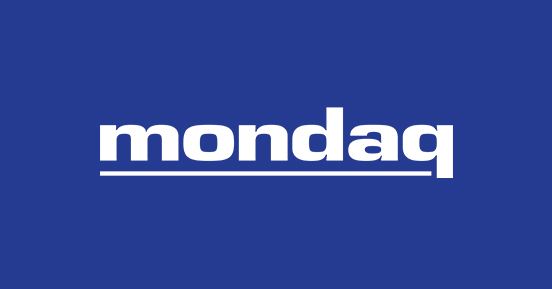
To provide some relief during the COVID-19 pandemic, the CARES
Act suspended required minimum distributions (RMDs) from
traditional IRAs and employer-sponsored retirement plans for 2020.
No such relief is available in 2021. Therefore, many retirees will
need to take taxable RMDs by the end of this year. Fortunately, a
couple of strategies are available to help you soften the tax
blow.
Reviewing the rules
If you have savings in a traditional IRA or employer-sponsored
retirement plan, such as a 401(k) plan, you must take RMDs every
year beginning at age 72 (70½ if you reached that age by
December 31, 2019). If you were subject to RMD requirements before
2021, you will need to take an RMD by December 31, 2021. If you are
turning 72 in 2021, you have until April 1, 2022, to take your
first RMD. After that, you must take RMDs by the end of each year,
beginning with December 31, 2022. There is proposed legislation to
push the beginning age for RMDs to 75, but as of now age 72 is
still the mark.
RMDs must be taken on time. The penalty for missing one is 50%
of the amount you should have withdrawn. That amount is calculated
by taking your retirement account balance as of December 31 of the
previous year and dividing it by your IRS-prescribed life
expectancy as of December 31 of the current year. For example, if
your account balance was $700,000 on December 31, 2020, and your
life expectancy as of December 31, 2021, is 21.5 years, then this
year’s RMD is $32,558.14 ($700,000/21.5). If assessed, the
penalty for not taking this RMD could be $16,279.
Related Read: For Good Financial Health, Take Your
RMDs
Strategies to consider
Unless you need the money for living expenses, try to minimize
or defer RMDs as much as possible. Doing so reduces the impact on
your tax bill and allows your savings to grow and compound on a
tax-deferred basis as long as possible. You might be able to take
advantage of one or more of the following strategies:
Take Your First RMD Early
If you are turning 72 this year, you have until April 1, 2022,
to take your first RMD. But that means you will have two RMDs next
year (April and December), which could push you into a higher tax
bracket. Therefore, it may be preferable to take your first RMD in
2021, even though it will increase this year’s taxable
income.
Name Your Spouse as Sole Beneficiary
If your spouse is more than 10 years younger than you and is
your sole beneficiary, you can use your joint life expectancies to
calculate your RMD. This will increase the life expectancy factor
and reduce the annual RMD amount.
Make a Qualified Charitable Distribution (QCD)
If charitable donations are already part of your plan, consider
donating a QCD from a traditional IRA rather than other assets.
This technique allows you to transfer up to $100,000 per year
tax-free directly to a qualified charity and apply that amount
toward your RMD. Because the funds bypass your taxable income, it
is the equivalent of a charitable deduction. But using a QCD is a
more effective strategy if an ordinary charitable gift would not be
fully deductible (for example, because you do not itemize) or if an
RMD would trigger undesirable tax consequences.
Note: QCDs are not available for employer-sponsored plans, but
it still may be possible to take advantage of this technique by
rolling the funds into an IRA.
Related Read: How a Charitable Remainder Trust Can Work as a
“Stretch IRA” Substitute
Invest in a Qualified Longevity Annuity Contract (QLAC)
You can fund a QLAC with the lesser of 25% of your retirement
account balance or $135,000 (in 2021). RMDs on those funds are
deferred until the annuity payments begin (at age 85), reducing
your RMDs at ages 72 through 85.
Continue working
If you keep working (and you do not own 5% or more of the
company you work for), your employer-sponsored plan may permit you
to defer RMDs until April 1 of the year following the year you
retire. This option is available only for your current
employer’s plan, not for previous employers’ plans or IRAs.
However, some plans may allow you to roll over funds from those
accounts and defer RMDs.
Have a plan
There is one piece of good news: Starting in 2022, the IRS will
use new tables with longer life expectancy factors, which can have
the effect of reducing RMDs. Even so, it is important to have a
plan to ensure that you avoid tax penalties, minimize your tax
costs and maximize the value of your retirement accounts. Discuss
these issues with your ORBA financial or tax advisor.
Sidebar: So you are nearing retirement .
If you are only a few years away from retirement, now is an
ideal time to consider several strategies for managing required
minimum distributions (RMDs) down the road. One option is to start
withdrawing retirement funds early (so long as you are older than
59½ and will not be penalized for doing so). Although this
will accelerate some of your tax liability, it allows you to spread
distributions over a longer period, potentially minimizing
undesirable tax consequences. It also reduces your account balance,
lowering your RMDs once you reach age 72. But look at current tax
rates and compare them with what you expect in later years.
Another possibility is to convert a portion of your traditional
IRA assets into a Roth IRA. Roth IRAs are not subject to RMDs and
you are allowed to make tax-free withdrawals from them. If you
transfer to a Roth, you will have to pay tax on the converted
amounts upfront. But you might be able to minimize taxes by
converting the account gradually over several years.
The content of this article is intended to provide a general
guide to the subject matter. Specialist advice should be sought
about your specific circumstances.
